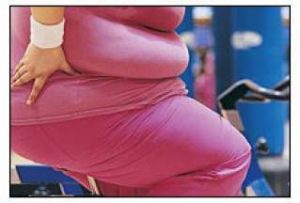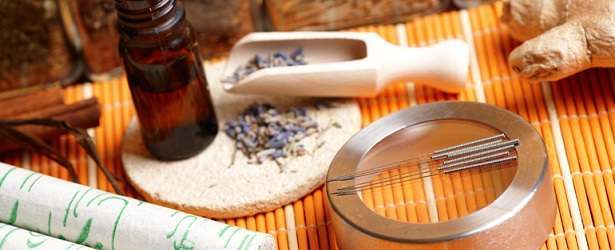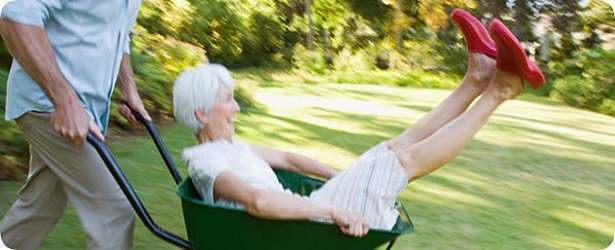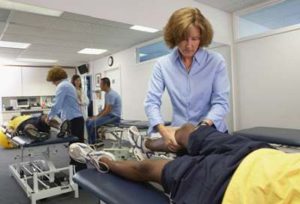The Relationship between Obesity & Joint Problems
Recently, obesity has become a global epidemic, as more people are being classified as obese. It’s a known fact that going over the ideal body weight (depending on the person’s Body Mass Index or BMI) or being obese causes several health issues, which can become serious. The most common complications from obesity are the problems to the joints. Most people suffering from obesity experience joint pain. Excessive weight increases the risk of developing joint problems. The most likely affected parts of the body exist wherever the weight is distributed like the ankles, hips, and knees. This is just one of the reasons why it is important to keep an ideal weight.
 Excessive weight brings so much stress to the joints that it soon causes damage, starting by blocking the normal blood flow to joints. This triggers, in kind, joint conditions and other medical complications. Joint problems can be defined in terms of inflammation, level of tenderness, and redness. All these symptoms appear based on the extent of damage to the joints.
Excessive weight brings so much stress to the joints that it soon causes damage, starting by blocking the normal blood flow to joints. This triggers, in kind, joint conditions and other medical complications. Joint problems can be defined in terms of inflammation, level of tenderness, and redness. All these symptoms appear based on the extent of damage to the joints.
Joint damage, which may lead to joint maladies, whenever not caused by hereditary reasons or genetically inclined factors, will be usually caused by obesity or excessive weight. If you feel some tenderness or pain in the joints, seek an immediate medical check up in order to determine its cause and possible remedy as well as to minimize its physical manifestations.
Obesity Increases the Risk of Joint Problems
 Several studies prove that obesity increases the risk of developing joint issues compared to those who have normal weight and a healthy body. In line with this fact, records show that knee and hip replacement procedures, administered to patients, have increased because of the global obesity epidemic.
Several studies prove that obesity increases the risk of developing joint issues compared to those who have normal weight and a healthy body. In line with this fact, records show that knee and hip replacement procedures, administered to patients, have increased because of the global obesity epidemic.
Most of the time, surgeons perform a hip or knee replacement as treatment on older patients who suffered from physical trauma or from conditions that damaged the bones and joints. But because of the increase in the number of people with obesity, surgeons are now operating more on people suffering from obesity. Records even show that more than half of the percentage of those people who have undergone hip and knee replacement are suffering from obesity.
Healthy Lifestyle and Diet
Keeping a healthy lifestyle and diet is important since this greatly improves the overall condition of the body as well as minimizes the chance or risk of developing joint problems later on. A study suggests weight loss of as little as eleven pounds is enough to reverse the risk of certain types of joint problems in women.

There are many easy ways to lose weight safely and effectively. Choose a change in your daily menu or diet, or develop a better and healthy lifestyle that includes daily exercises not extremely and physically stressful.
Reinforcing or strengthening the body, particularly the bones, muscles, and joints is very important. You can achieve this with daily simply exercises or activities such as walking, jogging, aerobics, swimming, hiking, biking, and even weight lifting.
If you are overweight or obese, seek advise from a medical professional or a doctor before making lifestyle changes or changes in your routine. Know that some things can potentially worsen your condition. With obesity, the change must be gradual and body adjustment is important to avoid physical shock and stress. Keep in mind that working out or exercising is really good for the body, but it can do some damage as well if not done without professional advise.

 Subscribe Now
Subscribe Now

 Currently, there are various treatment methods that lessen the gravity of this condition, but you still need to become familiar with the effects of these treatments so your can target specific symptoms. Some patients prefer to take traditional
Currently, there are various treatment methods that lessen the gravity of this condition, but you still need to become familiar with the effects of these treatments so your can target specific symptoms. Some patients prefer to take traditional  Other natural remedies used to relieve joint pain are apple cider vinegar, turmeric, ginger, honey, and cinnamon. Apple cider vinegar can be taken either orally, as a rubbing medium, or as a compress. The other four natural remedies were also proven to be very good at alleviating the pain that patients experienced.
Other natural remedies used to relieve joint pain are apple cider vinegar, turmeric, ginger, honey, and cinnamon. Apple cider vinegar can be taken either orally, as a rubbing medium, or as a compress. The other four natural remedies were also proven to be very good at alleviating the pain that patients experienced.
 Many people self-diagnose joint conditions if they are feeling some pain in the joint area. Some people may decide to move to a place with a warmer climate in order to minimize the pain brought by this malady. Do these ideas really help? Do they have a scientific basis? These are just a few of the most common things people hear as a suggestion when it comes to
Many people self-diagnose joint conditions if they are feeling some pain in the joint area. Some people may decide to move to a place with a warmer climate in order to minimize the pain brought by this malady. Do these ideas really help? Do they have a scientific basis? These are just a few of the most common things people hear as a suggestion when it comes to  Most people think that moving a lot or doing some exercise worsens the joint pain caused by joint conditions; this is not true. In fact exercises can help repair or rehabilitate the joint’s elasticity and overall condition since it can prevent hardening or stiffening of the joints.
Most people think that moving a lot or doing some exercise worsens the joint pain caused by joint conditions; this is not true. In fact exercises can help repair or rehabilitate the joint’s elasticity and overall condition since it can prevent hardening or stiffening of the joints. One thing is for sure, following a healthy lifestyle definitely reduces the risk of developing joint complications and minimizes the
One thing is for sure, following a healthy lifestyle definitely reduces the risk of developing joint complications and minimizes the 
 In some cases, patients may need some physical therapy before they can engage in normal physical activities. Patients who have undergone such therapies attest that they have noticed improvements in their condition, particularly in their motion capacity. This is especially true for those suffering from degenerative joint problems. Patients also noted that pains also subsided after they have implemented some tips and suggestions from self-help write-ups. Further research noted that water exercises helped people suffering from inflammation, particularly the elderly ages 60 and up, where the pain was reduced and improved their motion.
In some cases, patients may need some physical therapy before they can engage in normal physical activities. Patients who have undergone such therapies attest that they have noticed improvements in their condition, particularly in their motion capacity. This is especially true for those suffering from degenerative joint problems. Patients also noted that pains also subsided after they have implemented some tips and suggestions from self-help write-ups. Further research noted that water exercises helped people suffering from inflammation, particularly the elderly ages 60 and up, where the pain was reduced and improved their motion. Patients suffering from
Patients suffering from 


